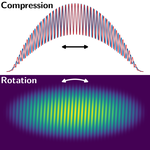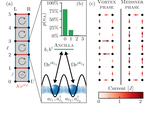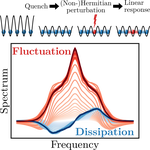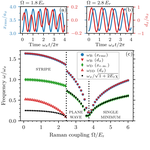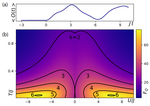Novel Measurement Tools for Many-Body Experiments
Last updated on
May 18, 2020
 Entanglement certification with quench dynamics;
Phys. Rev. Research 3, L032051 (2021)
Entanglement certification with quench dynamics;
Phys. Rev. Research 3, L032051 (2021)
As a new generation of quantum hardware realizes hitherto unexplored states of matter, novel detection tools become necessary to actually observe these. For this purpose, quantum setups such as based on cold atoms or trapped ions offer completely new possibilities, e.g., through the ability to manipulate individual particles and to track their dynamical evolution in real time. Exploiting these abilities, we design novel tools for observing and characterizing quantum mechanical states of matter.
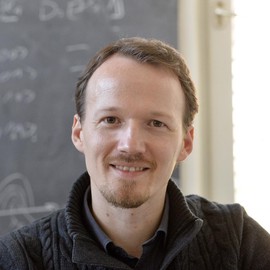

Kevin T. Geier
PhD Student (2018 – 2022)
Postdoc (2022 – 2024)
=> Senior Researcher at Technology Innovation Institute, Abu Dhabi
Publications
Superfluidity and sound propagation in disordered Bose gases
Superfluidity describes the ability of quantum matter to flow without friction. Due to its fundamental role in many transport …
arXiv:2407.17558 [cond-mat.quant-gas] (2024)
Qudit-native measurement protocol for dynamical correlations using Hadamard tests
Dynamical correlations reveal important out-of-equilibrium properties of the underlying quantum many-body system, yet they are …
arXiv:2407.03421 [quant-ph] (2024)
Quantum routing of information using chiral quantum walks
We address routing of classical and quantum information over quantum network and show how to exploit chirality (directionality) to …
AVS Quantum Sci. 5, 025001 (2023)
Dynamics of Stripe Patterns in Supersolid Spin–Orbit-Coupled Bose Gases
Despite ground-breaking observations of supersolidity in spin–orbit-coupled Bose–Einstein condensates, until now the …
Phys. Rev. Lett. 130, 156001 (2023)
Entanglement Witnessing for Lattice Gauge Theories
Entanglement is assuming a central role in modern quantum many-body physics. Yet, for lattice gauge theories its certification remains …
J. High Energ. Phys. 2022, 196 (2022)
Non-invasive measurement of currents in analog quantum simulators
Despite the pristine abilities of analog quantum simulators to study quantum dynamics, possibilities to detect currents are sparse. …
arXiv:2106.12599 [quant-ph] (2021)
From non-Hermitian linear response to dynamical correlations and fluctuation–dissipation relations in quantum many-body systems
Quantum many-body systems are characterized by their correlations. While equal-time correlators and unequal-time commutators between …
PRX Quantum 3, 030308 (2022)
Exciting the Goldstone Modes of a Supersolid Spin–Orbit-Coupled Bose Gas
Supersolidity is deeply connected with the emergence of Goldstone modes, reflecting the spontaneous breaking of both phase and …
Phys. Rev. Lett. 127, 115301 (2021)
From entanglement certification with quench dynamics to multipartite entanglement of interacting fermions
Multipartite entanglement, such as witnessed through the quantum Fisher information (QFI), is a crucial resource for quantum …
Phys. Rev. Research 3, L032051 (2021)
Relating Out-of-Time-Order Correlations to Entanglement via Multiple-Quantum Coherences
Out-of-time-order correlations (OTOCs) characterize the scrambling, or delocalization, of quantum information over all the degrees of …
Phys. Rev. Lett. 120, 040402 (2018)
Measuring multipartite entanglement through dynamic susceptibilities
Entanglement is considered an essential resource in quantum technologies, and central to the understanding of quantum many-body …
Nature Phys 12, 778–782 (2016)
Spectroscopy of Interacting Quasiparticles in Trapped Ions
The static and dynamic properties of many-body quantum systems are often well described by collective excitations, known as …
Peter Jurcevic, Philipp Hauke, Christine Maier, Cornelius Hempel, Ben P. Lanyon, Rainer Blatt, and Christian F. Roos
Phys. Rev. Lett. 115, 100501 (2015)
Tomography of Band Insulators from Quench Dynamics
We propose a simple scheme for tomography of band-insulating states in one- and two-dimensional optical lattices with two sublattice …
Phys. Rev. Lett. 113, 045303 (2014)



